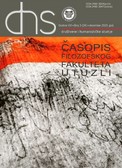METONYMIC USES OF BODY PARTS: HAND IN THE ENGLISH LANGUAGE AND RUKA AND ŠAKA IN THE BOSNIAN LANGUAGE
METONYMIC USES OF BODY PARTS: HAND IN THE ENGLISH LANGUAGE AND RUKA AND ŠAKA IN THE BOSNIAN LANGUAGE
Author(s): Anela Mulahmetović IbrišimovićSubject(s): Lexis, Comparative Linguistics, Cognitive linguistics, South Slavic Languages
Published by: Filozofski fakultet Univerziteta u Tuzli
Keywords: Cognitive linguistics; metonymy; metaphor; English; Bosnian; “hand” “ruka-šaka”;
Summary/Abstract: This paper explores metonymic uses of the body part “hand” in the English language and „ruka” and „šaka” in the Bosnian language. The aim of the paper is to establish similarities and differences between the languages in terms of conceptual metonymies exploiting these body parts. The paper also tries to determine to what extent conceptual metonymy interacts with or exploits other processes of cognitive thinking, namely chained metonymies and metaphor. The methodological framework of corpus analysis is in accordance with the taxonomies of metonymy types developed by Radden and Kövecses (1999) and Kövecses (2002) and patterns of conceptual interaction (Diez Velasco 2000, 2002). The study will show that body-part metonymies can form chained metonymies and that they often serve as a basis for metaphorical mapping,
Journal: DHS-Društvene i humanističke studije: časopis Filozofskog fakulteta u Tuzli
- Issue Year: XXIV/2023
- Issue No: 24
- Page Range: 211-230
- Page Count: 20
- Language: English

